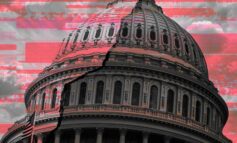
|
| “How Syria goes the region will” |
The atrocities perpetrated by all sides of the civil war in Syria have reached the level of genocide. Half the population of 23 million people has been displaced. 300,000 have died. Over two million injured? The country is in ruins. National unity is severely eroded.
The threat of Syria’s collapse has enormously grave implications. Syria lies in the heart of the region bordering and directly impacting Lebanon, Jordan, Turkey, Iraq and Israel.
The Syrian crisis is in its fifth year, and it may not end within the next five; neighboring Lebanon’s civil war lasted fifteen years.
The flood of refugees and the associated spread of terrorism make Syria a global crisis. Terror and migration threaten the unity of Europe; the west is in conflict over reception of asylum seekers and economic migrants.
The most recent round of peace talks between the regime and the opposition groups is a unique opportunity for the resolution of the Syrian crisis. Washington and Moscow are cooperating on Syria but this cooperation is not deep and not based on matched interests. Moreover, Syria’s recovery is complicated by multiple local socio-political ills, ills that Washington or Moscow cannot cure.
A short diversion as background: Four afflictions obstruct reform in the Arab world: oppressive governance, outmoded religious institutions, proliferating militias and deep rooted foreign intervention. Rulers distort laws, spiritual leaders stifle minds, militias undermine the state and neighbors or allies occupy land and interfere in domestic affairs. No wonder the Arab spring did not last long.
Syria illustrates the failed state vividly. This nation is headed by an autocrat whose family and supporting business elites have ruled the country for 46 years. President Bashar al Assad is supported by Russian air power and Moscow’s diplomacy, on one level, and on another by the Iranian military, the Lebanese Hezbollah and other Shiite volunteer fighters. Tehran is a major source of intervention in the region, but it is not the only agency to blame. The Syrian opposition is supported by the Gulf Arab states and their allies in the west, led by Washington.
Peace talks are set to start again on April 13. Negotiations are planned to run for 18 months. A ceasefire went into effect on Feb 27. The next two consecutive diplomatic steps are for the government and the opposition to agree on a transitional cabinet and then draft a new constitution. If successful, the 18 month peace talks will bring about national elections. A new leader for Syria would finally emerge.
War and peace wax and wane in Syria. Two diplomatic surprises emerged as the peace talks started; one was from President Putin and the other from President Obama.
Last month Russia surprised everyone by its partial withdrawal from Syria. Washington warmed up to the idea of Russia’s partial withdrawal. Washington reads the Russian move as an indication that Moscow is signaling President Assad to be ready to leave power when the time is ripe.
In an interview for the Atlantic magazine, Obama expressed strong remarks of distancing his administration from Saudi Arabia. The U.S. president criticized Riyadh for the promulgation of ideology of Islamic fundamentalism and for overdependence on Washington.
It is not only diplomacy that is shifting; the Syrian battleground is also changing. Russia and the Syrian army are now attacking the ISIS head on, whereas the opposition forces are enjoying a relative period of calm. ISIS is weakening in Syria and Iraq but getting stronger in Libya, Europe, Egypt and Yemen.
The Assad regime is recapturing lost territory and gaining stature. Russia may help Assad leave office when Putin finds a way to retain Alawite leadership in the Syrian army as part of a negotiated transition plan for Syria.
The last battleground shift is the expansion of Kurdish control of land in “Rojava” territory, Syria’s mini “Kurdistan” along the border with Turkey. The Kurdish forces have gained control of vast land in the north and east over the past five years. It is unfortunate that the Syrian Kurdish community is excluded from the peace negotiations
No matter how far President Assad succeeds in recapturing state territory from ISIS and the opposition, he will not be able to hold on to this liberated area without massive external assistance. It is difficult to imagine the current regime, unchanged, bringing peace back to Syria.
Among the factors determining the future of Syria the following five stand out: inspired sensitivity in easing Assad out of power; serious U.S. pressure on Saudi Arabia to make peace with Iran; Russian pressure on Iran to make peace with Saudi Arabia; accelerated speed in defeating ISIS and its ideology; and proper reception and repatriation of refugees.
The longer the crisis endures the more there is speculation about the future of Syria’s sovereignty, its unity, relation of central government to local communities and the role of religion and ethnicity in the nation’s reorganization.
A federated Syria is not a bad idea. The Swiss offer a model for democracy with ample power for diverse local communities. But the concept of a federation needs to mature in people’s minds.
Federal administration works when citizens of various backgrounds are sure of equality and when authority is secular in the different domains of society. The positive idea of turning Syria into a confederacy – to save its national sovereignty and economic unity- is deeply confused with the negative idea of dividing a sovereign nation into rival ethnic and sectarian mini states.
Dividing Syria along sectarian lines would follow the unfortunate case of Iraq, Sudan, Yemen, Cyprus and the Palestinian Territories of Gaza and the West Bank. Hatred does not make safe borders. Only positive incentives sustain secure states, and consequently lead to safe regions.
How Syria goes the region will.





Leave a Reply